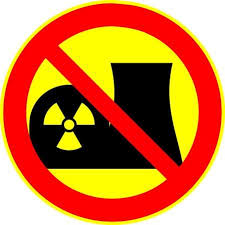There are many reasons that nuclear power cannot be used to fight the climate crisis. Here are just a few of them.
Currently, nuclear power supplies about ten percent of electricity world-wide with about four hundred and fifty nuclear power reactors. We would have to go on crash program of licensing and constructing thousands of new power reactors which can cost up to ten billion dollars each. This would cost trillions of dollars. Where is that money going to come from?
If we do go on a reactor building spree, the price will rise because it always does. Not one single nuclear power project in the U.S. since the 1950s has ever come in within the estimated budget and schedule. Billions of additional dollars beyond estimates would be spent. Schedules would slip and/or quality control would slip which would increase the probability of accidents.
There seems to be roughly one major accident at a nuclear power plant every ten years. If we built thousands of new nuclear power plants as fast as we could, then the time between accidents would inevitably drop to one every few years. Look at what happened when Fukushima blew up. It slowed or stopped some reactor projects while they redesigned new projects and reinforced old ones. And the public and investors will reject nuclear power because of accidents at nuclear power plants. Governments would plow ahead ignoring complaints until there were riots and rebellions. New plant projects would be sabotaged.
An increase in uranium mining would be required to fuel the reactors. Uranium mining has already devastated many environments around the planet, often on indigenous people’s land. Mining ten times the uranium would be a huge environmental disaster. Governments would ignore it because they think we have to do this to fight climate change. This would cause riots, rebellions, civil wars, etc.
Nuclear power is not carbon free. Yes, a nuclear power plant does produce less than a fossil fuel plant over its life-time but it builds up a carbon debt as the uranium is mined, refined and transported. It also emits a huge amount of carbon dioxide as the concrete that went into its construction dries. I have heard that it takes years of operation to pay off that original carbon debt.
It can take more than ten years to site, construct and turn on a nuclear power plant. We don’t have ten year. And we don’t have the extra five or ten years beyond that to pay off the carbon debt.
Nuclear reactors have already been shut down because the body of water they were using became too warm to be used for cooling. Climate change will continue to heat bodies of water and this includes the oceans. This will interfere with the operation of the plants.
There is already so much spent nuclear fuel being stored onsite at U.S. nuclear power reactor sites that they are running out of room. There will not be a permanent disposal facility in the U.S. until 2050 at the soonest. If we went on nuclear reactor building spree, the waste would have to be stored above ground temporarily which leads to a number of major problems. If and when we do have a permanent repository for spent nuclear fuel, thousands of tons would have to be transported from all over the U.S. with attendant safety and environmental problems.
I could go on, but I hope that my readers get the point that there is no way that nuclear power will help solve the climate crisis. According to the conservative IPCC report, we have twelve years to reduce our carbon emissions by forty percent. Nuclear power simply cannot ramp up fast enough and there is not enough money in the world to pay for an attempt.
Nuclear Reactors 624 – Problems With The Use Of Nuclear Power To Fight Climate Change

Written by
in
